When I started writing my “History Friday” columns, one of my objectives was to explore the “military historical narratives” around General Douglas MacArthur, so I could write with a better understanding about the “cancelled by atomic bomb” November 1945 invasion of Japan. One of the themes that has developed, and that I intend to explore in this and future columns, is that the “military historical narrative” of World War 2 (WW2) has roughly the same relationship with historical truth that “Gerrymandering” of political district boundaries has to do with US Constitution driven 10-year census redistricting. The objective of both is incumbent protection of the most powerful poltical factions with safe districts, at the expense of accountability to voters, with a secondary objective being the punishment of those who do not stick to the party line. Where I have found this most blatantly is with the 1943-1947 Joint Army-Navy Assessment Committee or (JANAC), which you can find at this link:
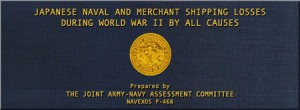
http://www.history.navy.mil/library/online/japaneseshiploss.htm
Where JANAC drew it’s “gerrymander line” after WW2 was at ships and craft of below 500 tons of displacement. This had a huge effect on on the historical record of WW2 and particularly on MacArthur’s South West Pacific Area and the Southern Pacific theater prior to the start of the Central Pacific Campaign at Tarawa. In other words, the entire Operation Cartwheel offensive of 1943-1944.
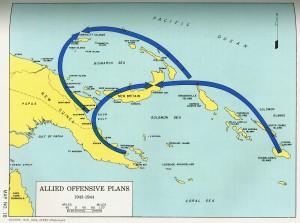
Here is a simple logistical thumbnail of why that is the case:
1) One large Japanese powered barge below 500 tons could supply a 6,300 man Imperial Japanese Army independent regiment for a day.
2) Three large Japanese powered barges below 500 tons could supply a triangular Imperial Japanese Army infantry division for a day.
3) Fifty large Japanese powered barges below 500 tons could supply a triangular Imperial Japanese Army infantry division at a distance of 300 miles.
4) There were 250 such barges shuttling between Rabaul and northern New Guinea in late August 1943.
5) During the month of September 1943 MacArthur’s Fifth Air Force destroyed 90 of those barges.
Because those barges were all 499 tons or less displacement, JANAC stripped that data from the US Military historical narrative as if they did not exist.
JANAC ARRIVING
The Joint Army-Navy Assessment Committee was initiated in January 1943 when the General Marshall Chief of Staff, U.S. Army, and Admiral King, Commander-in-Chief, U.S. Navy agreed that the formation of a joint committee to
‘assess enemy Naval and merchant shipping losses during World War II.’ The enabling paragraph of that agreement:
“By agreement between Chief of Staff and Commander-in-Chief, a Committee comprised of 4 Navy and 3 Army members is appointed to meet from time to time at the call of the senior member to study and evaluate reports of loss or damage of enemy Naval and Merchant vessels from all causes, except those cases considered by the Anti-Submarine Warfare Assessment Committee of the Office of the Commander-in-Chief, U.S. Fleet. Findings of the Anti-Submarine Warfare Assessment Committee will be included in the overall evaluation of enemy losses without further review. Periodic reports of the Committee will be submitted jointly to the Chief of Staff and Commander-in-Chief.”
As Marshall appointed three and King appointed four of the seven members of the committee, neither of who could in any way be considered friendly to affirming MacArthur’s wartime accomplishments, you can see why the historical record was bent as it was. Nowhere was this more apparent that with the Battle of the Bismark Sea.
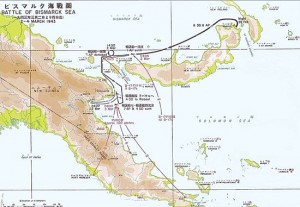
Most histories including the one on wikipedia make much of MacArthur overselling this victory and the number of ship kills based on JANAC “validation.” What most people — including historians who should know better — miss is that there was a lot of other below 500 ton ship traffic in the Rabaul – New Guinea area.
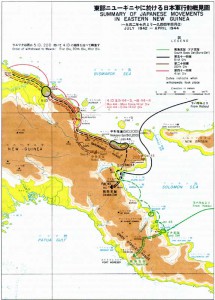
General Kenney, disputing the JANAC findings in his 1950 book “The MacArthur I Know,” stated that there was a barge convoy that merged with the JANAC affirmed March 1943 troop convoy and many of the claims his pilots made were from that second convoy of JANAC purged shipping. Most MacArthur haters — which includes virturally the entire American naval history community — didn’t even acknowledge the importance of Japanese WW2 barge traffic until the early 1990’s. It was not until the 1993 book “The Japanese Merchant Marine in World War II” by Mark P. Parillo did naval historians go into the make up of the Japanese Army barge fleet and its affects on Japanese WW2 logistics.
There were also a number of other reasons, besides MacArthur bashing, related to the impending consolidation of the Departments of War and Navy and the creation of an independent air force that JANAC acted as it did. Point blank, the wrong weapons in the hands of the wrong military services were responsible for the majority of merchant ship kills in WW2, since they were smaller than 500 tons, and this reflected poorly on the WW2 Carrier Navy and the independent air force General Marshall supported in post-war Defense Department budgets.
This picture is from the final Admiral Nimitz August 31, 1945 war diary, the first paragraph at the top is the 7th Fleet patrol plane kills for August 1945:
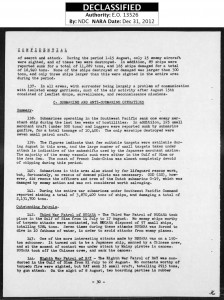
These two pictures are from Naval Combat Statistics of World War 2 with relevent information highlighted in yellow:
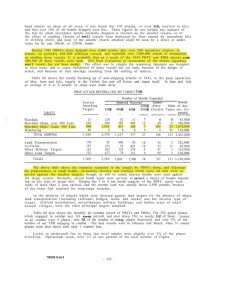
and this picture

The inconvienient truth in all three photographed documents are plain to see. It was not Carrier fighters or USAAF heavy bombers that did the killing of small merchantmen. It was the two and four-engine navy patrol planes (and USMC tactical air show in other NACS of WW2 tables) operating as a part of MacArthur’s the Far Eastern Air Forces that did that killing.
THE JANAC DEALS
I don’t yet know the full extent of the gerrymandering deals JANAC engaged in, but I do know that the participants and their staff’s — many of whom also became flag officers — were utterly ruthless in implementing them.
Dr. Jeffrey G. Barlow, author of Revolt of the Admirals: The Fight for Naval Aviation, 1945—1950, and a Historian in the Naval Historical Center’s Contemporary History Branch, wrote a monograph introducing the CD-ROM version of NAVAL AVIATION COMBAT STATISTICS WORLD WAR II that detailed the document’s official supression for 30 plus years until one of the Naval reservist authors donated a stolen copy of the report to the Naval Historical Center 40 years later and after the 1985 declassification of the JANAC files in the National Archives. (Sections of the monograph are reproduced in the Notes and Sources section below). This is the key paragraph —
Although all members of the Reserve ACIO group had had access to the suppressed report during their time in OPNAV, when a copy turned up missing, Miss Eleanor Linkous, the Air Branch’s secretary, rightly suspected that Barber was the culprit. Fortunately, however, no one in the office took any action to retrieve it, because this is the copy that he turned over to the Naval Historical Center more than forty years later—the one from which this CD-ROM version is being reproduced.
Now you know why I don’t trust our gerrymandered WW2 historical narrative…and why I am developing methodologies to start to correct them.
Notes and Sources
1) Perry-Castañeda Library — Map Collection — Engineers of the Southwest Pacific, 1941-1945, Vol. 1
http://www.lib.utexas.edu/maps/historical/engineers_v1_1947.html
2) GENERAL GEORGE C. KENNEY, “The MacArthur I Know,” DUELL, SLOAN AND PEARCE., New York, @ 1951, Library of Congress Catalog Card No. Jl-10404
3) Mark P. Parillo, “The Japanese Merchant Marine in World War II,” Naval Institute Press; April 1993, ISBN-13: 978-1557506771
4) Pacific Fleet August 31, 1945 War Diary, accessed via Fold3 digitization service
5)
NAVAL AVIATION COMBAT STATISTICS WORLD WAR II (CD-ROM VERSION)
AIR BRANCH
OPNAV-P-23V NO. A129
17 JUNE 1946
OFFICE OF NAVAL INTELLIGENCE
OFFICE OF THE CHIEF OF NAVAL OPERATIONS
NAVY DEPARTMENT
WASHINGTON, D. C.
BACKGROUND ON THE MONOGRAPH
NAVAL AVIATION COMBAT STATISTICS—WORLD WAR II
Written by Dr. Jeffrey G. Barlow, a Historian in the Naval Historical Center’s Contemporary History Branch. Dr. Barlow is the author of Revolt of the Admirals: The Fight for Naval Aviation, 1945—1950.
“The report included herein was completed in May 1946, and by the time Stuart Barber left active duty in June of that year, hundreds of copies were in the process of being printed for distribution throughout the Navy and Marine Corps.2 It was at this point that the document fell afoul of postwar service politics.
.
In the wake of the Navy Department’s ongoing fight with the War Department over service unification, Secretary of the Navy James Forrestal had set up an organization in the fall of 1945 designated SCOROR (Secretary’s Committee on Research on Reorganization) to review unification and other issues. In July 1946, SCOROR was given a copy of Barber’s report for review. A highly critical memorandum resulted from this examination. In this paper, an anonymous SCOROR staff member, apparently acting as a devil’s advocate, asserted that the study had been “compiled for Navy propaganda purposes” and took the accompanying text to task for containing a number of apparent errors of interpretation. Because of the Army Air Forces’ express concern over the Navy’s continuing use of land-based aircraft, the reviewer seemed particularly upset that some of the tables illustrated the Navy’s extensive (and successful) operation of land-based air in the Pacific War.3
.
As a result of this review, Rear Admiral Thomas H. Robbins, Jr., the Assistant Head of SCOROR, sent a memorandum to the Chief of Naval Intelligence on 2 August 1946 providing hiscomments on Naval Aviation Combat Statistics—World War II. In this paper, Robbins stressed:
.
(a) As a compilation of statistics it is an excellent work containing much information of
value to those concerned with Operations Planning. In addition it serves as an excellent source of
information for historical and other purposes.
.
(b) Page iv contains statements which, while probably not intended to give the
implications which they do, nevertheless in my opinion would reflect discredit upon the Navy
Department and the Naval Service. . . .
.
(c) Many of the tables of statistics could be misused, from the point of view of
merger [of the services], were the publication to be given wide distribution among the armed services.
In light of these concerns, Robbins recommended that the publication not be distributed at that time,
although he noted that pertinent excerpts could be made available on a “need to know” basis by the
head of the Air Branch of the Office of Naval Intelligence.4 Agreeing with Robbins’s recommendation,
ONI ordered the destruction of all but a handful of copies of the printed report, which it kept for its
files.”
.
.
and later…
.
.
Although all members of the Reserve ACIO group had had access to the suppressed report during their time in OPNAV, when a copy turned up missing, Miss Eleanor Linkous, the Air Branch’s secretary, rightly suspected that Barber was the culprit. Fortunately, however, no one in the office took any action to retrieve it, because this is the copy that he turned over to the Naval Historical Center more than forty years later—the one from which this CD-ROM version is being reproduced.
.
The fate of the other file copies of Naval Aviation Combat Statistics remains unknown. For many years, the Air Branch employed Miss Blanche Berlin, the only member remaining from the wartime coding and tabulation crew, whose knowledge was invaluable for filling special requests for action report data from the files. But so far as is known, no broad release of statistical data from the suppressed report has ever been made—with the conspicuous exception of the air-to-air combat data released in the spring of 1948 and described in the author’s book, Revolt of the Admirals.6
.
While historians may still find the data in this report to be of great value, the fifty years of its suppression undoubtedly have reduced its usefulness for other purposes. For example, one of its important original objectives—documenting the reasons for the naval aviators’ evident pride in their wartime accomplishments—is no longer of concern for the majority of the participants.
.
What remains inexplicable to this day is why the Navy made no effort to prepare and issue a carefully edited version of the study, at least once the heat of the unification controversy had died down. It is particularly baffling since Stuart Barber served as a senior civilian employee in OPNAV from 1947 to 1970 and since as the report’s author he was in a favorable position to have at least proposed this course, but he never attempted to do so.Whatever the report’s current value, however, it is unthinkable that this mass of descriptive and interpretative data covering the efforts of so many thousands of men—constituting one of history’s greatest and most decisive striking forces—should not be released in full as originally written. One of the best lessons to be learned from this story may well be that rather than suppress information to prevent its possible misuse, the best course of action may be to aggressively use the information to confound opponents, once it has been reviewed for accuracy.
The official (I think) record of torpedoes in WWII does not mention the failures of the Mark 14. I linked to it in an earlier comment.
I’d heard/read (can’t recall source) that mines dropped by B-29s made Japan’s intercoastal waterways so dangerous as to nearly stop shipping, that this late-in-the-war methodology all by itself sank more tonnage than the Navy did during the entire war. The B-29s could plant mines fast enough and in large enough quantities that the Japanese could not clear them.
BIG MAC BOOK
It’s your mission from GOD.
With MacArthur at his right hand of course.
What Anonx said – write your book about this.
C’mon, you know you want to. Expand on your essays and put it out there, as a Kindle book, if nothing else.
Roy said:
>>I’d heard/read (can’t recall source) that mines dropped by B-29s made Japan’s
>>intercoastal waterways so dangerous as to nearly stop shipping, that this
>>late-in-the-war methodology all by itself sank more tonnage than the Navy
>>did during the entire war. The B-29s could plant mines fast enough and in
>>large enough quantities that the Japanese could not clear them.
The B-29 mining campaign against the Japanese home islands is one of those really interesting and hidden by classification stories of WW2.
I have a draft column on it in the writing queue.